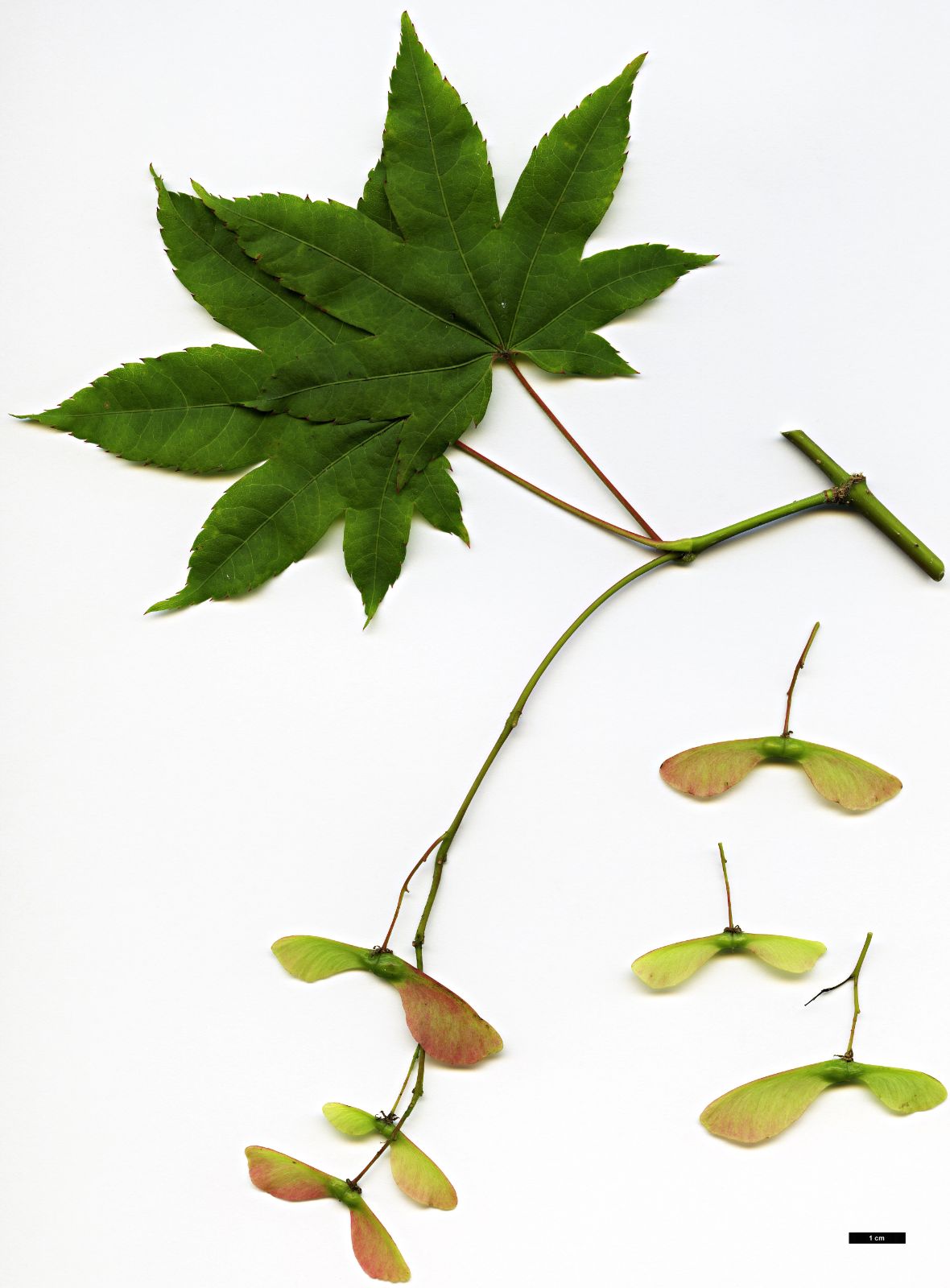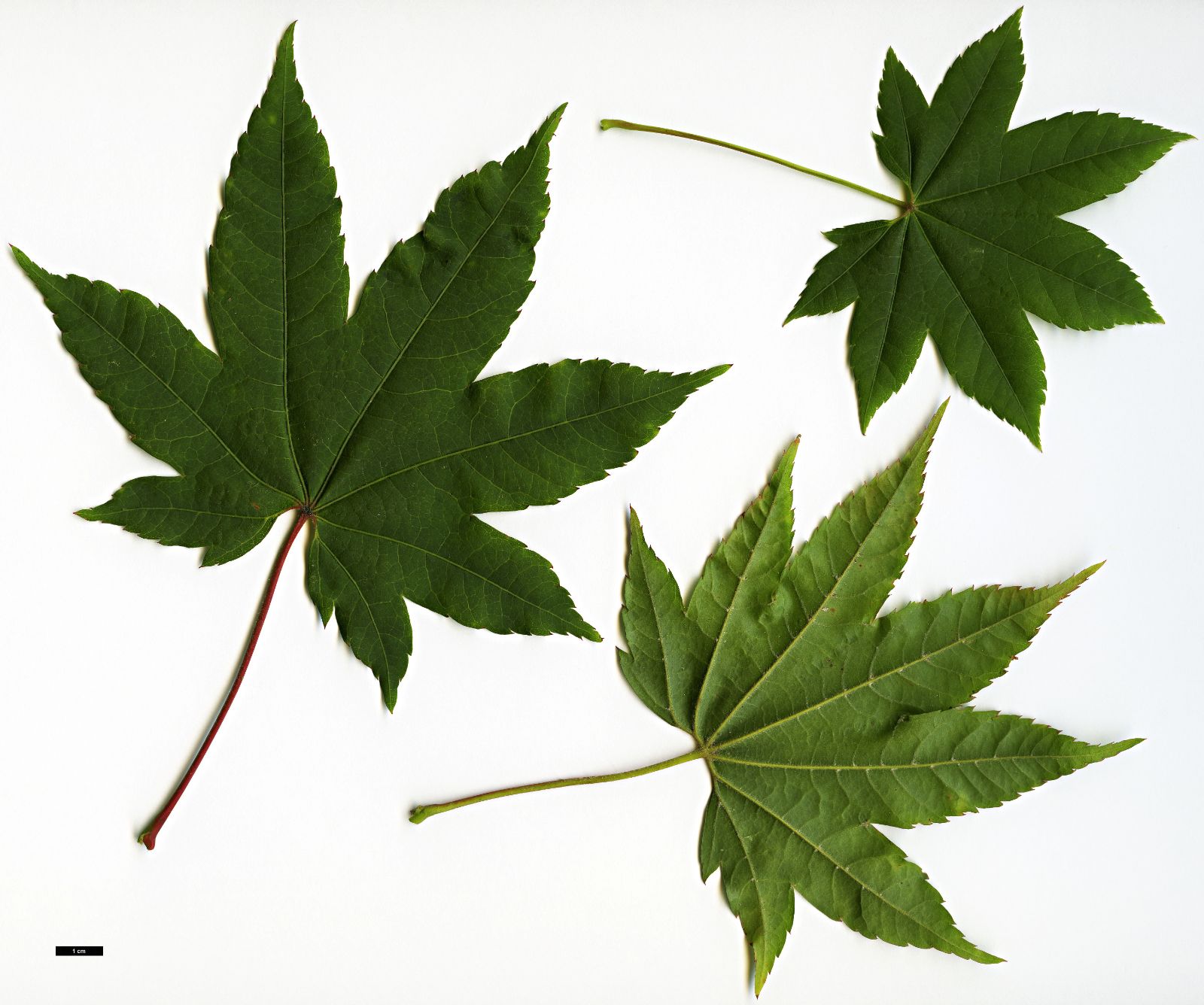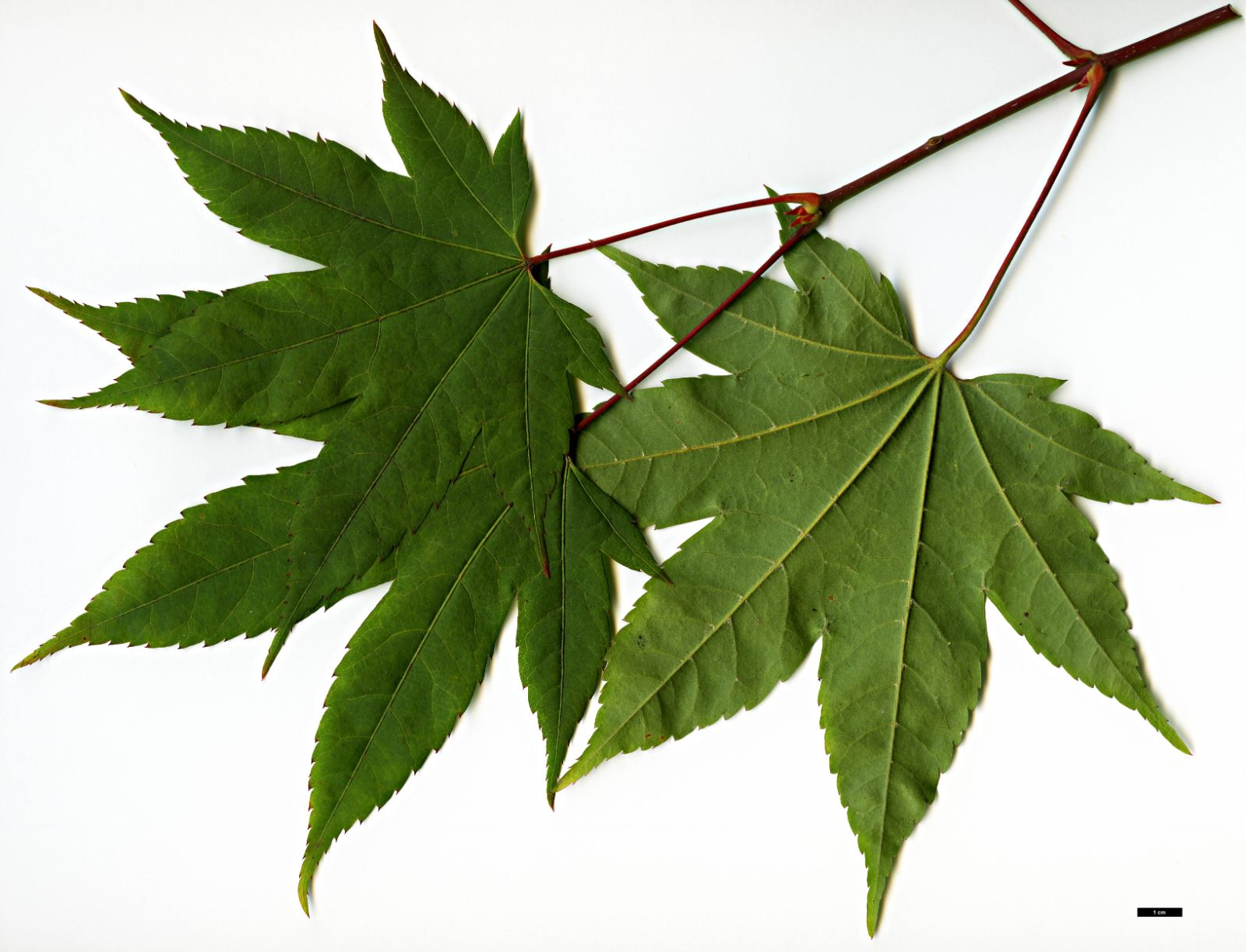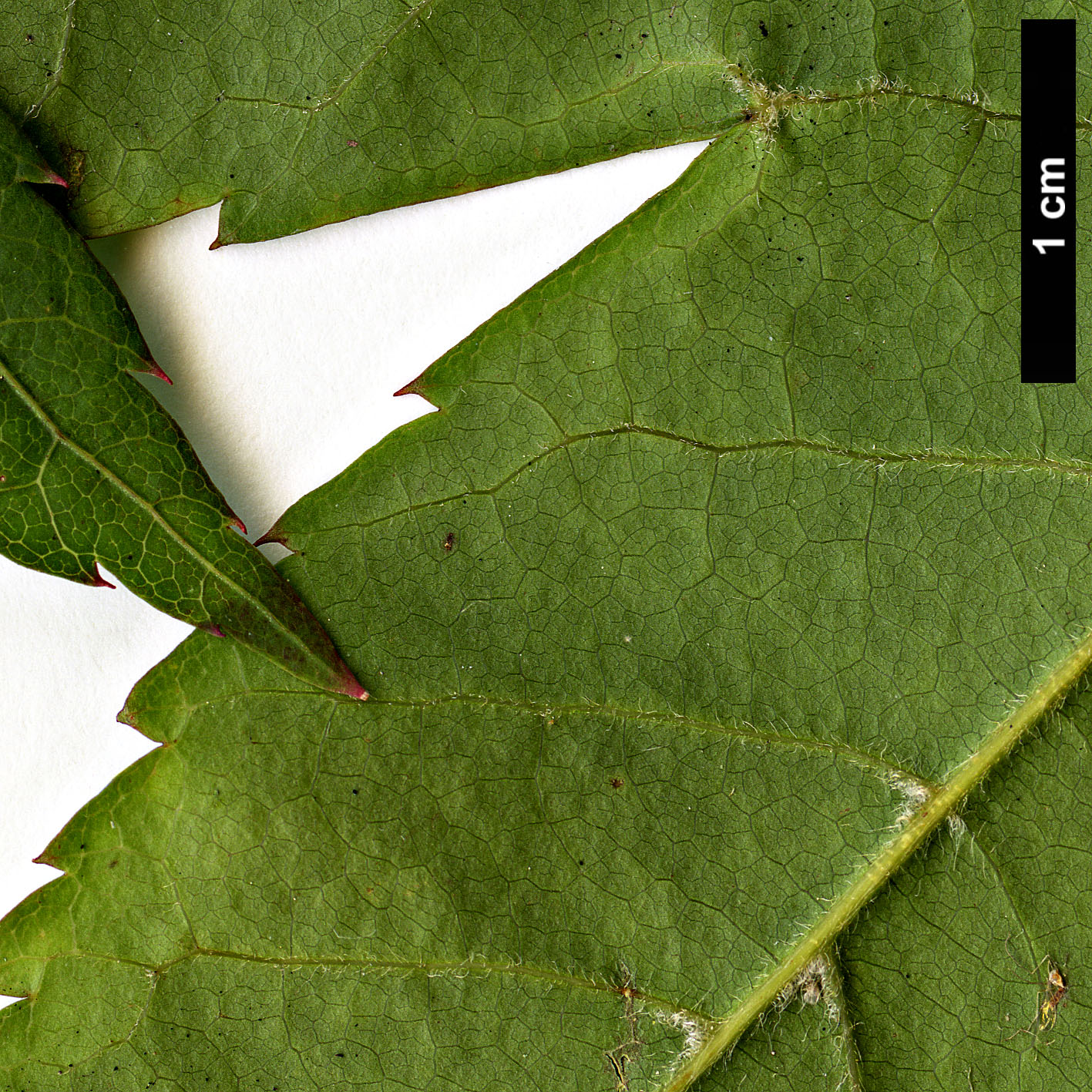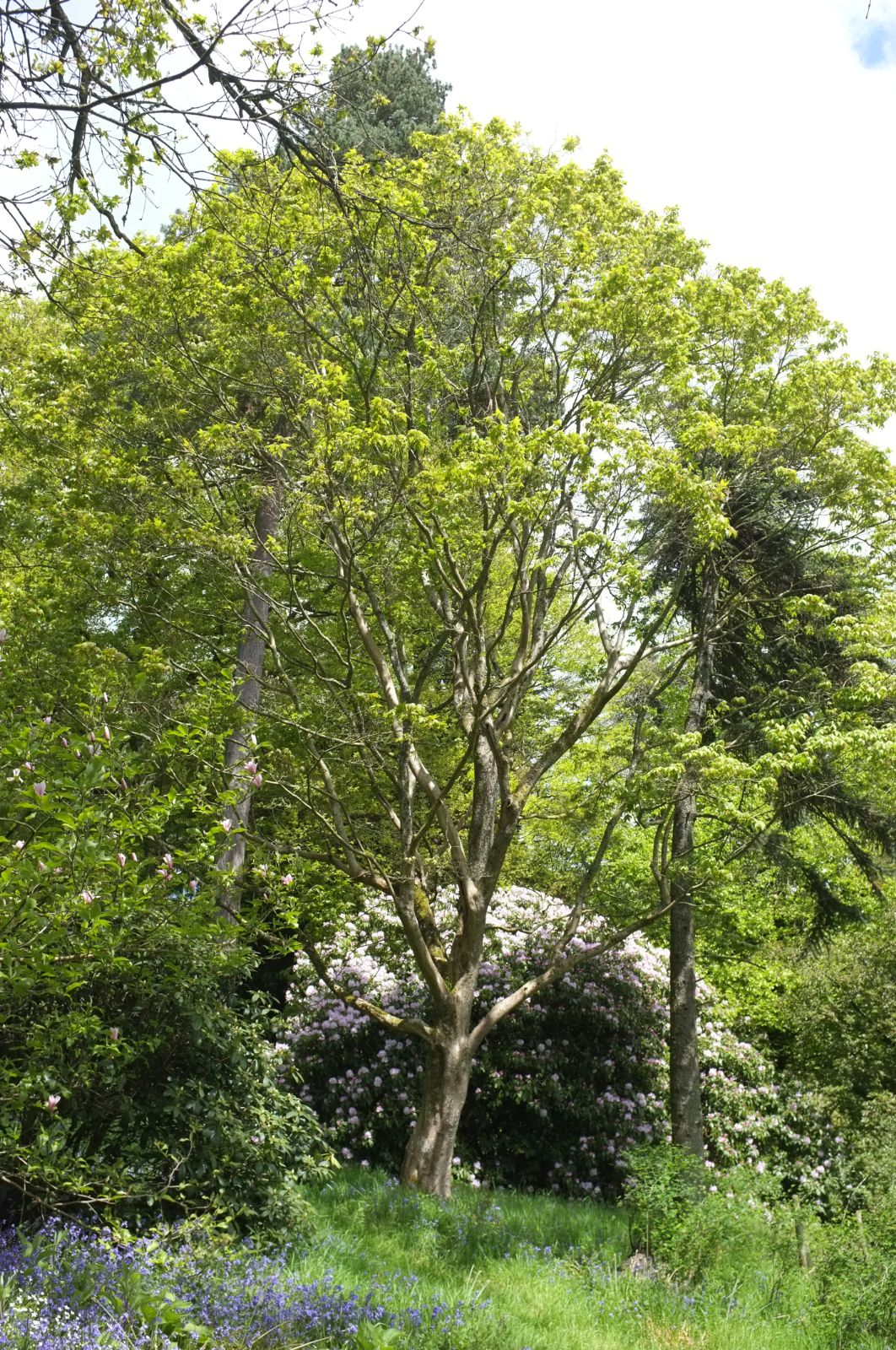Acer flabellatum
Sponsor
Kindly sponsored by
Lawrence Banks
Credits
Dan Crowley (2020)
Recommended citation
Crowley, D. (2020), 'Acer flabellatum' from the website Trees and Shrubs Online (treesandshrubsonline.
Genus
- Acer
- Sect. Palmata, Ser. Sinensia
Synonyms
- Acer campbellii subsp. flabellatum (Rehder) A.E. Murray
- Acer heptalobum Diels
- Acer mapienense W.P. Fang
- Acer shangszeense W.P. Fang & T.P. Soong
Infraspecifics
Other taxa in genus
- Acer acuminatum
- Acer amplum
- Acer argutum
- Acer barbinerve
- Acer buergerianum
- Acer caesium
- Acer calcaratum
- Acer campbellii
- Acer campestre
- Acer 'Candy Stripe'
- Acer capillipes
- Acer cappadocicum
- Acer carpinifolium
- Acer 'Cascade'
- Acer caudatum
- Acer ceriferum
- Acer chapaense
- Acer chienii
- Acer circinatum
- Acer cissifolium
- Acer × conspicuum
- Acer cordatum
- Acer coriaceifolium
- Acer × coriaceum
- Acer crataegifolium
- Acer davidii
- Acer diabolicum
- Acer distylum
- Acer divergens
- Acer duplicatoserratum
- Acer elegantulum
- Acer erianthum
- Acer 'Esk Flamingo'
- Acer fargesii
- Acer fenzelianum
- Acer forrestii
- Acer franchetii
- Acer × freemanii
- Acer fulvescens
- Acer 'Gimborn'
- Acer ginnala
- Acer glabrum
- Acer 'Gold Coin'
- Acer granatense
- Acer grandidentatum
- Acer griseum
- Acer heldreichii
- Acer henryi
- Acer × hillieri
- Acer hookeri
- Acer hyrcanum
- Acer japonicum
- Acer kawakamii
- Acer komarovii
- Acer laevigatum
- Acer laurinum
- Acer laxiflorum
- Acer lobelii
- Acer longipes
- Acer macrophyllum
- Acer mandshuricum
- Acer maximowiczianum
- Acer maximowiczii
- Acer metcalfii
- Acer miaotaiense
- Acer micranthum
- Acer 'Mindavi'
- Acer 'Minorient'
- Acer miyabei
- Acer miyabei × campestre
- Acer monspessulanum
- Acer morifolium
- Acer 'Mozart'
- Acer oblongum
- Acer obtusifolium
- Acer okamotoanum
- Acer oliverianum
- Acer opalus
- Acer orientale
- Acer palmatum
- Acer papilio
- Acer pauciflorum
- Acer pectinatum
- Acer pensylvanicum
- Acer pentaphyllum
- Acer pentapotamicum
- Acer pictum
- Acer pilosum
- Acer pinnatinervium
- Acer platanoides
- Acer platanoides × amplum
- Acer platanoides × truncatum
- Acer × pseudoheldreichii
- Acer pseudoplatanus
- Acer pseudosieboldianum
- Acer pubinerve
- Acer pycnanthum
- Acer rubescens
- Acer rubrum
- Acer rufinerve
- Acer saccharinum
- Acer saccharum
- Acer sempervirens
- Acer 'Serpentine'
- Acer serrulatum
- Acer shenkanense
- Acer sieboldianum
- Acer sikkimense
- Acer 'Silver Cardinal'
- Acer 'Silver Ghost'
- Acer sinense
- Acer sinopurpurascens
- Acer spicatum
- Acer stachyophyllum
- Acer taronense
- Acer tataricum
- Acer tegmentosum
- Acer tenellum
- Acer tetramerum
- Acer tibetense
- Acer tonkinense
- Acer triflorum
- Acer truncatum
- Acer tschonoskii
- Acer turkestanicum
- Acer tutcheri
- Acer ukurunduense
- Acer velutinum
- Acer wardii
- Acer 'White Tigress'
- Acer wilsonii
- Acer × zoeschense
A deciduous tree to 10(–15) m. Bark green when young, turning grey to brown with age, smooth. Branchlets glabrous, purplish-red or greenish, turning darker. Buds ovoid, with 4 pairs of scales. Leaves chartaceous, broadly pentagonal in outline, base cordate, 5– to 7-lobed, 8–12 × 8–16 cm, lobes ovate, apically acute or acuminate, margins serrate with appressed teeth, upper surface mid-green, lower surface paler, glabrous except for tufts in vein axils; petiole 4–7 cm long, red to green, glabrous; autumn colours yellow to purple. Inflorescence terminal, paniculate, to 5 cm. Flowers 5-merous, pedicels slender, sepals ovate to lanceolate, ciliate margined, petals obovate, as long as sepals, stamens 8, inserted inside of the glabrous nectar disc, ovary glabrous. Samaras 3–3.5 cm long, wings spreading horizontally or nearly so. Nutlets ovoid. Flowering in May, with unfolding leaves, fruiting in September and October. (Xu et al. 2008).
Distribution Myanmar China Guangxi, Guizhou, W Hubei, Jiangxi, Sichuan, Yunnan
Habitat Mixed forests between 800 and 3500 m asl.
USDA Hardiness Zone 7-8
RHS Hardiness Rating H4
Conservation status Least concern (LC)
Taxonomic note This species was treated as part of A. campbellii, at subpecific rank, by van Gelderen et al. (1994), though as a species by Xu et al. (2008), whose treatment of the A. campbellii complex is followed here. A. flabellatum differs from A. campbellii in its serrate, rather than serrulate leaf margins, while its flowers have a glarbrous disk and ovary, which in A. campbelllii are pubescent.
Quite hardy, apart from in the coldest areas, Acer flabellatum was introduced by Ernest Wilson in 1907 while collecting for the Arnold Arboretum (Edwards & Marshall 2019), though little material of this vintage is grown in collections. It is better represented by a number of more recent collections, including SICH 1469, which grows at RBGs Kew and Edinburgh, and was collected from 2775 m in rich forest on gravelly soils on an east facing mountain in Xichang County, Sichuan. Erskine (2012) found this growing as A. oliverianum in some collections, as well as under the correct name. A second SICH collection, SICH 1818, made in 1996 at 1660 m in Nanjiang County, Sichuan, is also succeeding in cultivation. In shade in the Old Arboretum at Westonbirt, Gloucestershire, a plant grown from this gathering has made a squat, rounded tree. The same collection grows at Windsor Great Park, as does an example of SBEC 0305, collected on the Sino-British Expedition to the Cangshan, 1981. An example of this is also at Wakehurst. SABE 1127, collected from the Shennongjia Forest District, Hubei, grows at the Morris Arboretum, Philadelphia and the United States National Arboretum, Washington D.C..
The species makes a highly attractive tree with a rounded crown and is tolerant both of full sun and partial shade. Roy Lancaster was impressed with its autumn colour when he saw it on Emei Shan in the autumn of 1980, describing it has the most common maple species there where it was ‘brightly staining the hillsides around’ red or yellow (Lancaster 1989).
var. yunnanense (Rehd.) Fang
Synonyms
Acer campbellii var. yunnanense Rehd.
var. yunnanense has leaves with ovate to oblong lobes, with setose, finely serrate or serrulate margins. Its flowers have, occasionally, slightly pubescent ovaries (Rehder in Sargent 1905; Fang 1939).
Distribution
- Myanmar
- China – Yunnan
RHS Hardiness Rating: H4
USDA Hardiness Zone: 7-8
Taxonomic note Placement of this taxon is somewhat disputed. It was originally described as a variety of A. campbellii by Rehder, from Henry 10495, with a glabrous disk and slightly, finely pubescent ovary (Sargent 1905). Fang (1939) later studied numerous specimens and considered it allied to A. flabellatum rather than A. campbellii, on account of only some specimens having slightly pubescent ovaries, with this character seemingly inconsistent. Its leaf margins however seem closer to A. campbellii. van Gelderen et al. (1994) treat it as a variety of A. flabellatum (as A. campbellii subsp. flabellatum var. yunnanense) though Xu et al. (2008) treat it as synonymous with A. flabellatum. Given its distinctness from, yet alliances too, both species, it is included here, following the most recent account which accepts it as a distinct entity. Suffice to say, further study on this group is warranted.
Acer flabellatum var. yunnanense is grown in collections, though is not always correctly identified. Flowers are necessary to be certain, with careful examination of the floral disk and ovary required. Examples of authentic, known origin material are scarce. At Westonbirt two examples are currently grown as this taxon, from wild sourced seed collected by Mikinori Ogisu in Xichang, Sichuan, in 1995 under Ogisu 950589. This collection has also been attributed to A. oliverianum (as A. schneiderianum) (Grimshaw & Bayton 2009), though based on the Westonbirt plants, and material at RBG Kew, it is of this affinity rather than belonging to A. oliverianum.
The trees at Westonbirt are fine specimens, growing in partial shade of a mature Quercus robur in the Old Arboretum. Their new growth is an attractive deep red, though they are yet to flower (pers. obs. 2018), thus their identification is only tentative. Two older trees with round, shapely crowns grow in nearly full sun along The Link in Silk Wood at Westonbirt. Planted in 1991, these have somewhat smaller leaves than other examples of the variety and are, unfortunately, of garden origin. A similar example to these also grows in the Old Arboretum. At the David C. Lam Asian Garden, Vancouver, var. yunnanense is susceptible to late frosts, or even not so late frosts, as a specimen there is prone to leaf out in February (D. Justice, pers. comm. 2020).

